Two great victories of the Russian fleet, which are rarely remembered
In the early spring of 1790, the third, decisive campaign of the Russian-Swedish war of 1788-1790 began. Despite all efforts, King Gustav III did not manage to achieve any noticeable advantage in the previous two years. Russia, while waging a victorious war with Turkey in the south, not only successfully fought back in the Baltic, but also delivered tangible retaliatory strikes to the Swedes. The main role was played by the Baltic Fleet, which defeated the enemy in the Gogland and 1st Rochensalm battles. However, this did not cool the king’s warlike fervor. He longed for revenge, pinning his hopes on his naval forces. His plan was simple and bold. Given that the Swedish coast and ports are cleared of ice two weeks earlier than the Gulf of Finland, Gustav intended to send his fleet to Revel, where the squadron of Vice Admiral V. Chichagov wintered, and defeat it using the surprise factor. Then the king intended to deliver the same blow to the Kronstadt squadron of Vice Admiral A. Cruz, to land troops at the walls of St. Petersburg, where the world would be dictated by the Russians. Swedish Commander-in-Chief fleet, King’s brother, Admiral-General Duke Karl of Südermanland, received from his scouts comprehensive information about the state of Revel Harbor and the ships in it. Given the double superiority in power, the Swedes were confident in victory.
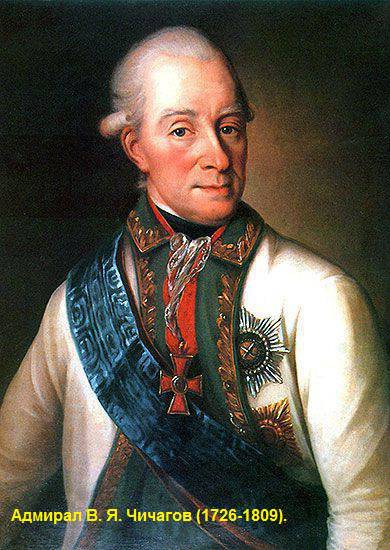
However, Russian intelligence officers also ate their bread for good reason, and soon V. Chichagov already knew about the upcoming attack. In winter, he visited the capital, reported to the empress on the fleet action plans during the current campaign. Catherine II inquired whether V. Chichagov would be able to repel an attack by superior enemy forces on Revel in the spring. The Vice Admiral assured her that he would manage. “But there are a lot of them, but you are few!” - Catherine did not stop. "Nothing, mother, will not swallow, choke!" - the commander answered.
On the Revel raid, the Russian squadron was preparing for battle. It consisted of ten battleships and five frigates, just up to 900 guns. V. Chichagov was particularly alarmed by the fact that the squadron was not yet floated, and the crews of three quarters consisted of recruits who had seen the sea for the first time. Therefore, the battle V. Chichagov decided to take, standing on anchors, "strengthening himself in a defensive position."
All battleships and the frigate “Venus” lined up in the first line. The remaining frigates, auxiliary vessels and firefighters formed the second line. The avant-garde commander, Vice-Admiral A. Musin-Pushkin, is stationed at Saratov, the rear-guard commander Rear-Admiral P. Khanykov on 74-gun “Saint Helena”. The commander raised his flag on the "Rostislav". Everyone hurried. Working around the clock, Russian sailors managed to load the cores and gunpowder, to replenish stocks. 1 May squadron met the enemy in full readiness.
The next day, about. Nargen saw the Swedes in the morning haze. The enemy fleet consisted of 20 battleships and seven frigates that had more than 1600 guns. In addition to the teams on the ships were six thousand people landing. At the crossing, the Swedes conducted several artillery exercises, and their fleet was completely fused.
There was a weak messenger wind favoring the attackers. Having found each other almost simultaneously, the opponents were still in different situations. If the appearance of the Swedes was not a surprise for V. Chichagov, for Karl Südermanland the appearance of the Russian ships ready to join the battle was an unpleasant surprise. This confused the plans of the duke. All the officers gathered at the meeting of the flagship Swedish ship Gustav III. After some disputes, they decided to attack the Russian squadron under sail.
Karl told the chief of staff Nordensheld that twenty years ago the Russians had burned the Turkish fleet at Chesme in this way. This time the Swedes decided to repeat the Russian maneuver, but at the same time burn them themselves. At the side of the Gustav III, the frigate Ulla Fersen was already swaying on the waves, to which his brother had to move before the battle, in order not to be exposed to excessive danger.
The wind began to grow rapidly, pushing the Swedish ships straight into Revel Bay with their impulses. Not keeping himself in line, one of the battleships jumped all the way onto the stones, sowing them firmly. Around the loser, from which they were thrown overboard the gun, the fleet continued to move. The commander of the flagship, Clint, tried to convince Rear Admiral Nordenskiöld to take the battle at anchor, indicating a sharp deterioration in the weather. "Late! - threw the chief of staff, - We are already attacking! "
V. Chichagov made the final preparations for the battle. At the military council, he ordered the use of guns only on sails and spars, in order to deprive the Swedish ships of the possibility of maneuver. “They, my dears, will beat us to themselves. Play back to them! ”- explained the vice-admiral. And here over “Rostislav” a signal was raised “Prepare for battle!”. Silent on battery decks. Strong hands commanders already squeezed banniki, ganshpugi. From the fuse wicks smoked light smoke. By ten in the morning on 2 in May of 1790, the foremost Swedish ships converged with the Russian squadron at a distance of fire. The battle has begun.
The enemy, moving closer to the squadron, turned through the warlock to the left tack and walked along the entire Russian battle line, and then retreated north to the island of Wulf. The leading Swedish sailing ship "Dristikgeten", descending into the wind, swept along a large course alongside Russian ships. Volley had no success. The cores are undershot. But in response, he received several well-aimed volleys from each Russian ship and, turning away to Wulf, zazyl holes sails. And along the line of Russians, the next one was already running - “Raksen Stender”. Having received heavy injuries, he ran aground near the island of Wulf and after trying to remove himself from the stones he was left by the team and burned.
A fair wind drove the enemy ships to the shore and banked them to the right combat side so that the lower batteries flooded with water, and all the upper ones became open targets for the Russian commanders. Fifth in the Swedish ranks, a ship flying the flag of the avant-garde commander Rear Admiral Modei raced along the squadron. To set an example of courage, he turned away from the Russian line only ten meters away. His ship managed to achieve several hits, but he himself barely left with broken yards.
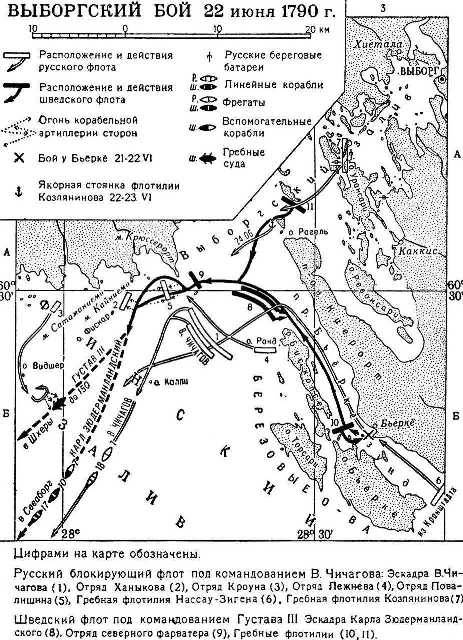
Russian gunners acted in harmony, their volleys followed one after the other with minimal intervals. Attempting to repeat the maneuver of the avant-garde commander Forsigtikheten paid with a cleaned grape shot. The flagship Gustav III was replacing it, desperately leaning. But as soon as his commander Clint effectively defiled along the Russian squadron, as a well-aimed shot from the "Yaroslav" interrupted the ship's focus-ray. He immediately began to demolish the Russians.
V. Chichagov gave the command to get ready to take the enemy flagship aboard. However, the Swedes only twenty fathoms from Rostislav managed to correct the damage. "Gustavu III" was lucky, and he miraculously escaped capture. But miracles are not repeated. The back matelot of the flagship “Prince Karl”, which was beaten in a turn by a grotto and fore-stenghi, was not saved. The ship became out of control. An attempt to regain the position, using the lower sails, failed.
They were immediately swept away by the Russian nuclei. After ten minutes of resistance, "Prince Carl" dropped anchor and surrendered to the mercy of the victors. V. Chichagov crossed himself: "There is one!" The Sophia-Magdalena who followed him was ready to share the fate of the captive ship. He was lucky - "Prince Karl" covered him from Russian cannons. Being away from the battle, Karl Südermanland watched in horror. The fate of "Prince Charles" was expected by many of his best ships. Above the "Ulla Ferzen," a signal was raised to stop the battle. Swedish ships were rushing to get away from the disastrous Russian fire. Away from about. Wulf Raxen Stender blazed like a huge fire.
At one o'clock in the afternoon, the Russian “Hurray!” Thundered over the raid. Revelsky battle ended in complete victory. Having lost two battleships and more than 700 people prisoners, the Swedes retreated. The losses of the Russians amounted to 8 people killed and 27 wounded. It would seem that the fiasco of Revel was supposed to sober up the Swedes, but Karl Südermanland thought otherwise. He was sure that the Russians suffered serious losses, and besides, Chichagov was still not ready to sail. And the Swedes turned to Kronstadt.
Reinforcement came from Karlskrona: two new battleships, a frigate and several transports with various supplies. Being with the rowing fleet at Rochensalm, the king, having received the news of the defeat and the desire of his brother to resume the attack on the Russians, blessed the duke and his fleet to win. But Kronstadt was already preparing to meet the foe. The ships standing there were headed by the idol of youth, the heroic captain of "Eustache" at Chesme, Vice Admiral A. Cruz. Direct and quick-tempered Cruz often became undesirable for high society. Yes, and Catherine II treated him coolly. But the fleet adored his hero, believed in him - this determined his appointment as commander of the Kronstadt squadron.
Preparing for the upcoming campaign was very difficult. The best went to Revel to Chichagov, the Kronstadters were content with the rest. There were not enough officers to recruit the teams - A. Cruz ordered the army to be taken, there were not enough sailors - they took the orderlies from the capital and even the prisoners from the prisons. To provide the squadron with supplies, the admiral went to the extreme - ordered to knock down locks from warehouses and to rake out all that is.
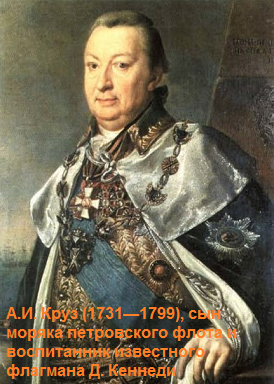
Learning about the events of Revel, the vice-admiral decided to take a position between the islands of Sescar and Biorca. On the southern shore of the Gulf of Finland, steep precipices, called by the people Red Hill, towered in the distance. To strengthen the position and defense of the fairway at Kronstadt, an old battleship and frigate was left, and the small fairway blocked the northern fairway from Sisterbek to Eotlin. The main forces of the Kronstadt squadron consisted of seventeen ships of the line and twelve frigates.
And in St. Petersburg confusion reigned. Upon learning of the Swedish forces that came to Revel, Catherine II was worried: is the Kronstadt squadron ready to repel a possible attack? “Tell me, what is Cruz doing now?” She kept asking her secretary Khrapovitsky. “Rest assured, Your Majesty, he will overpower the demon himself!” Answered the secretary, who knew the vice-admiral intimately. Not reassured by the answer, Ekaterina sent the former head of Cruise through the Archipelago Expedition Alexei Orlov to Kronstadt with the admonition to find out what and how. Arriving at the flagship "John the Baptist" ("Chesma"), Orlov humorously asked Cruise: "When will the Swedes come to St. Petersburg?" Cruz pointed to the squadron: "Only when they pass through the splinter of my ships!" Returning from the squadron, Orlov reassured the empress
At dawn 23 May 1790, opponents found each other miles in four. The 42 Swedish ships, unlike ours, are located in the 2 battle lines. But it did not bother Cruise at all. His squadron staggered in a staggered manner and with its right wing advanced forward on the enemy.
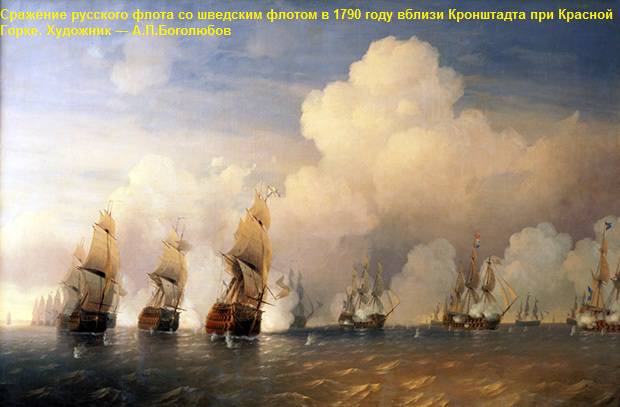
The first to enter the battle were avant-garde ships under the command of Vice-Admiral J. Sukhotin. The Swedes turned on the power of their guns. The bitterness of the battle increased with every minute. Russian commanders fired so often that there were even explosions of guns, which injured and killed the servants. In the midst of the battle, the Swedish core, fired at close range, tore off J. Sukhotin’s leg. However, the vice-admiral did not allow himself to be carried to the ship’s infirmary, and, bleeding from the shkanzah, he continued to command the vanguard.
Every hour the Swedes were increasing the onslaught. Cruz, who walked on the deck of the flagship, was outwardly completely calm, smoking his favorite clay pipe. Only once did the commander turn pale when he learned of the wound of his friend, Jacob Sukhotin. Having transferred the command to the commander of the flagship, he rushed to the vanguard on the boat in order to bid farewell to his dying military comrade. Hugged, kissed according to Russian custom, and back. Under the enemy fire went around the entire squadron. Standing to his full height, covered with the blood of a murdered sailor next to him, he encouraged the crews, giving the necessary orders to the captains.
By evening, the Swedes fired less frequently. Their ships, extinguishing fires, began one after another to leave the battlefield. The wind calmed down, and Karl Südermanland feared that he would be calm. Russian squadron was in the same position. Place the battle left behind her!
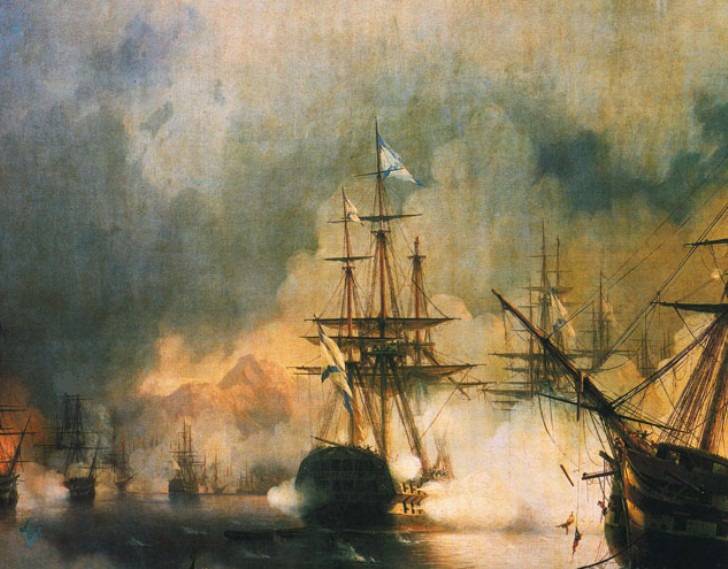
Barely stopped the last volleys, Cruise on the boat again walked around the ships. Inspected the damage and congratulated the sailors on their victory. In the evening, Catherine received a report from the commander of the rowing flotilla of Prince K. Nassau-Siegen, who was at Vyborg. It is not known for what reasons, but he informed the Empress that Cruz was utterly defeated and the Swedes were about to break through to the capital. Panic began in the palace. However, closer to midnight, a message arrived from Kronstadt that Cruz, although he was attacked by the enemy, was shot all day and did not retreat.
May 24 battle resumed. Now Charles struck at the Russian center. He approached Cruise's squadron, but did not get very close and, wanting to take advantage of the multiplicity of his ships, did various maneuvers, but all the tricks of the enemy were unsuccessful, and Cruz everywhere opposed him with a fitting rebuff. Trying to get the Russian ships at the maximum distance, the Swedes beat their cores into the water so that they ricocheted to reach the goal. But it did not help. The squadron met the enemy with violent fire. Moreover, the Russian flagship thundered dance music, which incredibly astounded Karl. After half an hour, the Swedes retreated.
Upon learning of the deplorable state of his brother, Gustav III, who was with rowing ships four miles from the battle scene in Biorkesund, sent Karl to support twenty galleys. But two Russian frigates turned them to flight. Soon the king was informed that the squadron of V. Chichagov, having entered under sail, was moving towards Kronstadt. Gustav immediately notified Karl of this. The duke had one last chance. And he decided on him. Lifting the battle flags, the Swedish ships rushed forward. Frequent shots rang out again. Hoped on the decks of the core. The Swedes pressed with such decisiveness that the Kronstadters began to faint under the pressure of a superior enemy. The moment came when the squadron’s position became critical: at the cost of enormous efforts, the Swedes managed to cut through the weakened line of the Russians. Cruise ships were shot through. The upper decks were covered with dead, and blood flowed in the scuppers.
It seemed that the battle for all the linear canons was lost. But Vice-Admiral Cruz found the only correct way out in this situation. At his signal, a detachment of frigates rushed in on the enemy. Having made a dashing maneuver, the ships decisively attacked the enemy, forcing him to retreat. The position has been restored. The Russian squadron, as before, blocked the way for the Swedes to St. Petersburg. Cruise, who was closely following the course of the battle, noted that the Swedes had begun firing blank charges, trying to maintain noise and saving ammunition. “What if the adversary had a reserve at the end?” Thought the vice-admiral. He ordered the squadron to go to the new course in order to get close with the Swedes. But, not taking the fight at the shortest distance, they began to hurry away. Admiral's guess was confirmed. At a signal from the flagship small Kronstadt squadron rushed in pursuit of the enemy. The danger of a Swedish attack on the capital was eliminated.
The Swedish fleet, towed by thalers, tried to hide in the Vyborg gulf. Cruise ships pursued him relentlessly. The Revel squadron of V. Chichagov arrived in time to help them. Together, the Russian sailors drove the enemy to Vyborg and blocked it. Only a month later, at the cost of enormous losses, he managed to break through to Karlskrona, but the fate of the Russian-Swedish war was predetermined. From the defeat of Gustav III could not save the darling of anything. Soon a peace was signed in the town of Verela, according to which Sweden abandoned all its claims and pledged to reimburse Russia for all the costs of the war. Catherine II was again able to focus the country's efforts on the fight against Turkey. But, as it turned out, not for long.
Sources:
Shigin V. Admiral Cruz. Series "Life of wonderful sailors." M.: Horizon, 2015. C. 6-37.
Shigin V. Admiral Cruise // Heroes of the Russian sailing fleet. M.: EVERYTHING, 2011. C. 57-68
Shigin V. From Revel to Krasnaya Gorka. // Sea collection. 1994. No.4. C.73-77.
Skritsky N.V.Ya. Chichagov // The most famous Russian naval commanders. M .: Veche, 2000. C. 137-142.
Skritsky N.V.Ya. Chichagov // 100 great admirals. M .: Veche, 2003. C. 194-197.
Lebedev A.V.Ya. Chichagov and his role in stories Russian sailing fleet // Gangut. 2011. No. 64. C. 21-37.
Firsov I. Twice Captive. M .: Astrel. 2002. C. 83-132.
ф
- Technical engineer
- The most glorious victory of the Russian fleet
Special tactics of Admiral Chichagov
Actions of the Russian fleet on the Lower Danube in 1877
Genius resolute offensive strategy
Suddenness in the tactics of Suvorov
The genius of the maneuver who beat Napoleon
Peter's reform of the Russian army
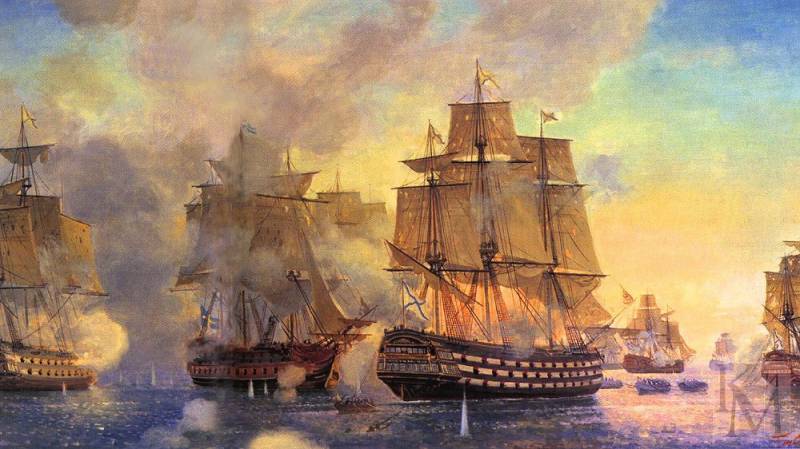
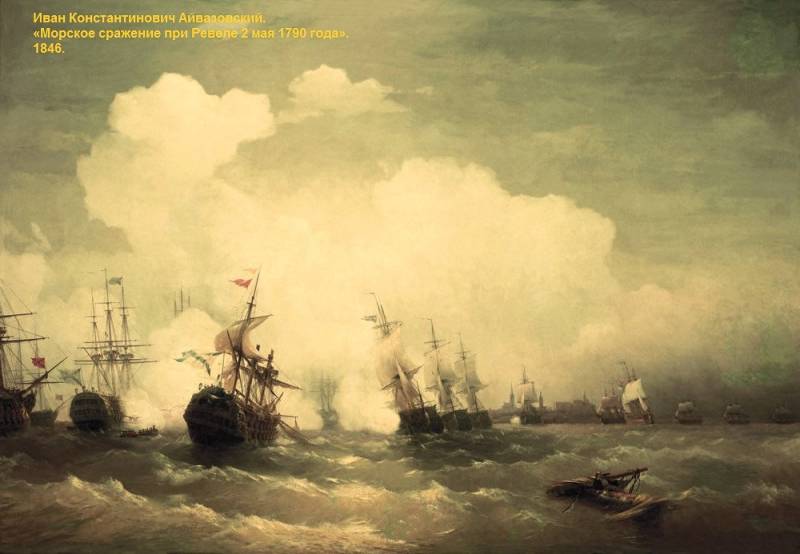
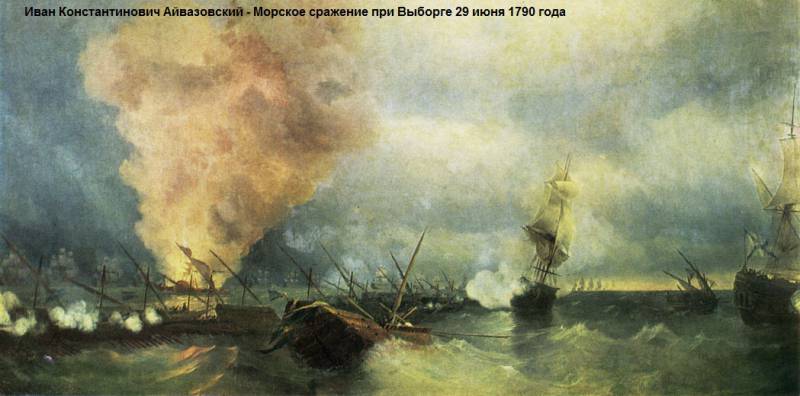
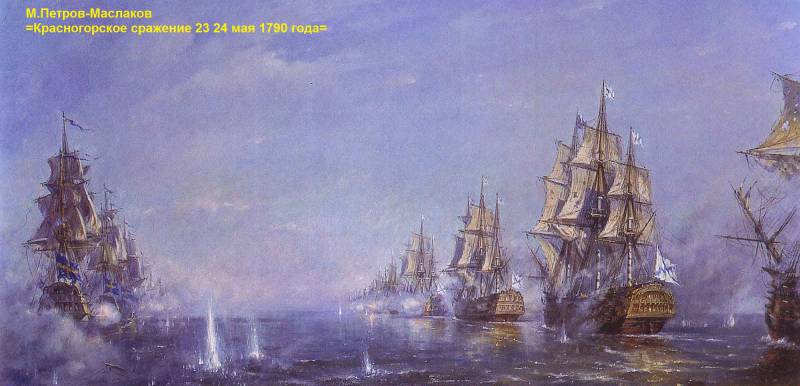
Information